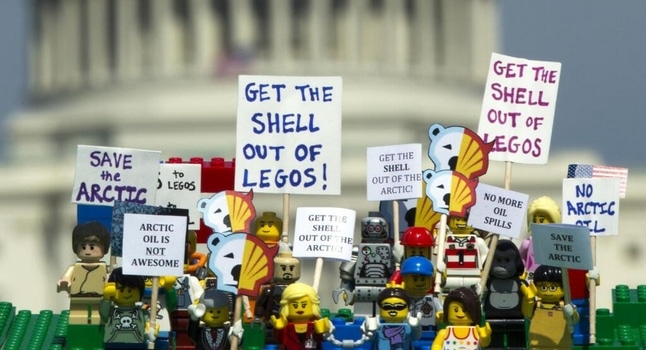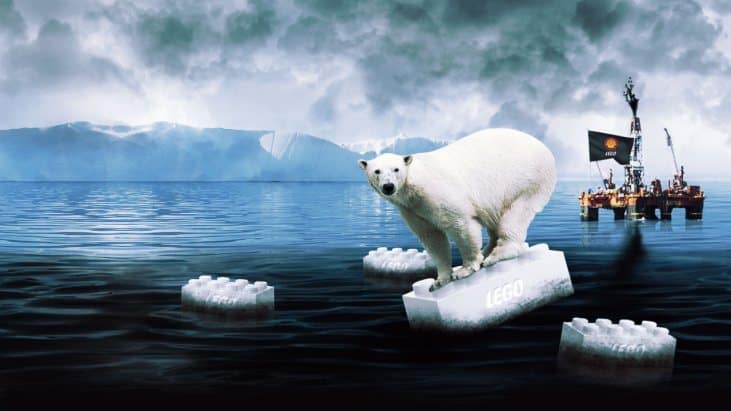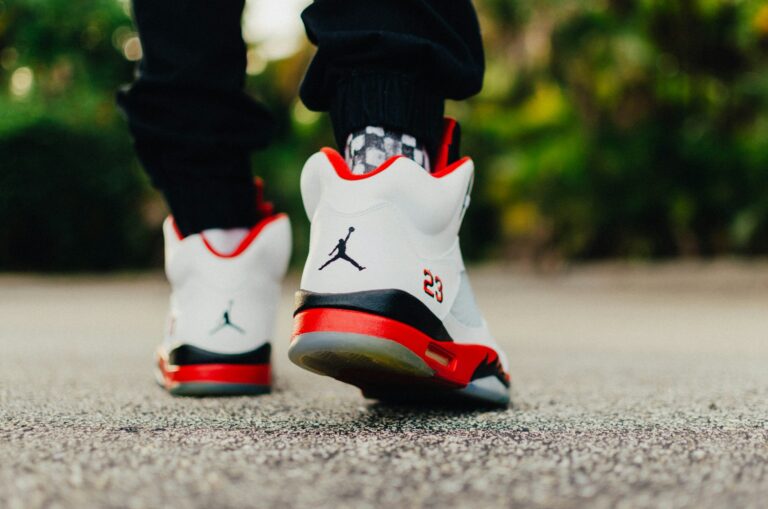In 2011 Lego and Shell entered into a renewed partnership in which Lego would make shell-branded petrol stations, lorries, and racing cars, and Shell would make these products available throughout their global network. However, after pressure from Greenpeace, Lego has announced it will not be extending the contract next time round.
The Greenpeace campaign is centred around a 1 minute 45 seconds youtube video which depicted a lego-shell drilling rig in a lego arctic with appropriate wildlife, all of which slowly gets submersed in crude oil. It has received far in excess of 6 million views to date, prompting Jorgen Vig Knudstorp, Lego chief executive, to take action.
Reluctantly take action, it has to be said.
The corporate relationship between the two power-brands goes back decades and continues to be fruitful for both. The addition of a sizeable and worldwide distribution channel has obvious benefits for Lego, while Shell gets to share some of Lego’s brand loyalty through association with Lego’s friendly ‘toy maker’ image, being a major distributor and including its colours and logo in the product.
For Shell, talk of the arctic may hamper efforts to be associated with more positive emotions (the friendly toy provider), but the industry is already acknowledged to be bad for the environment, and the brand damage suffered by the potential for an accident is not huge. BP’s brand has largely recovered since the almost unprecedented spill of 2011.
However, when Lego is associated with even the potential for environmental disaster in the arctic, that becomes a bigger problem. Friendly, joy-supplying toy makers simply don’t kill polar bears. There was and is significant reputation risk to the brand in signing this deal.
And this is why Jorgen Vig Knudstorp’s reticent response has the potential to weaken the Lego brand. Although announcing that the “co-branding” part of the agreement will not be extended at the end of the current agreement, Lego refused to confirm how long was left on the long-term agreement signed only three years ago, while Shell announced the partnership “has been a great success and will continue to be as we roll it out in more countries across the world”. Comments that don’t do much to distance the Lego brand from that of Shell and the petroleum industry.
On top of this, Mr. Vig Knudstorp went on to attack Greenpeace for targeting Lego rather than Shell, saying that this strategy “may have created misunderstandings among our stakeholders about the way we operate”.
And this is precisely the point. While the deal makes great commercial/sales sense for Lego, the risk to the Lego brand of cross-branding with an industry very capable of generating negative headlines is high. Lego would need a way to clearly distinguish itself from shell among its stakeholders (a plan that Mr. Vig Knudstorps response so far would indicate is not existent), or it needs to recognise that while this might be a purely commercial deal involving no drilling by Lego, by association it appears to stakeholders as if Lego is indirectly supporting arctic oil exploration and drilling.
This particular case shows the dangers of co-branding without mitigating brand risks. Co-branding involves a fusion of brands, however temporarily and to whatever degree. For Lego, resorting to trying to explain that the two brands are separate looks to be a potentially costly brand defense.
References: BBC, RT.com, Business Week, Sky News, Shell
Pictures from: Think Kind, Shell, Eurobricks









